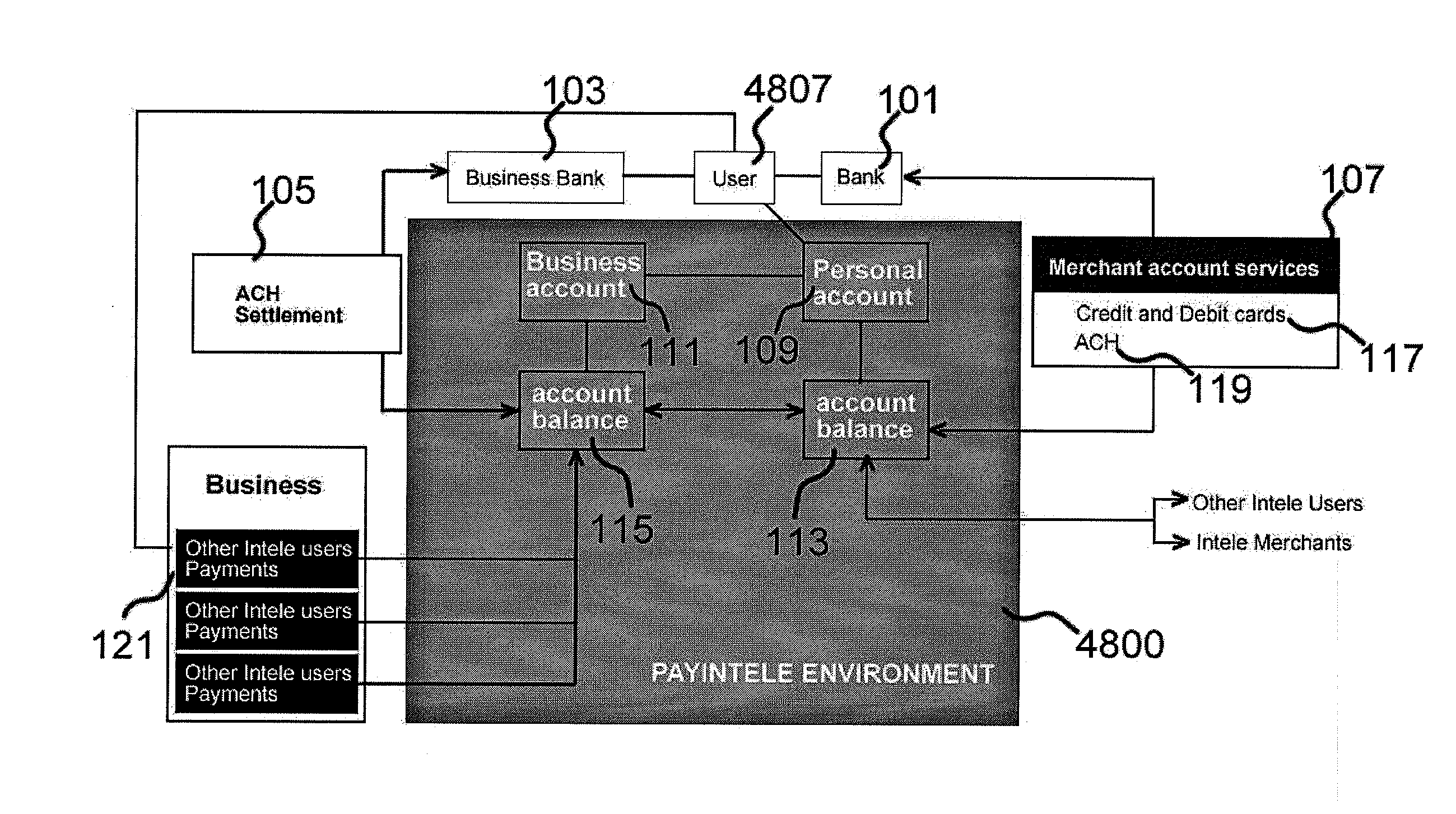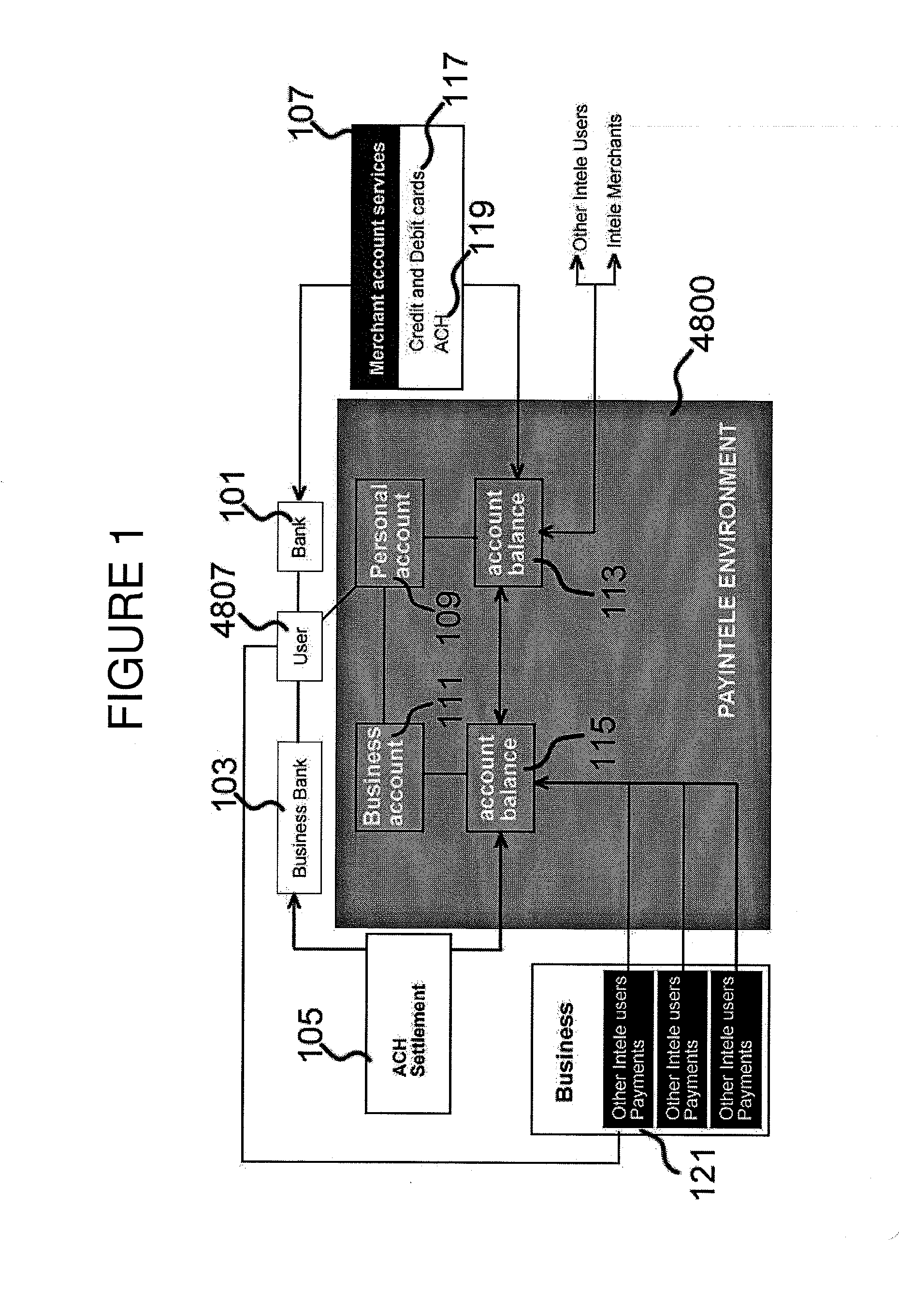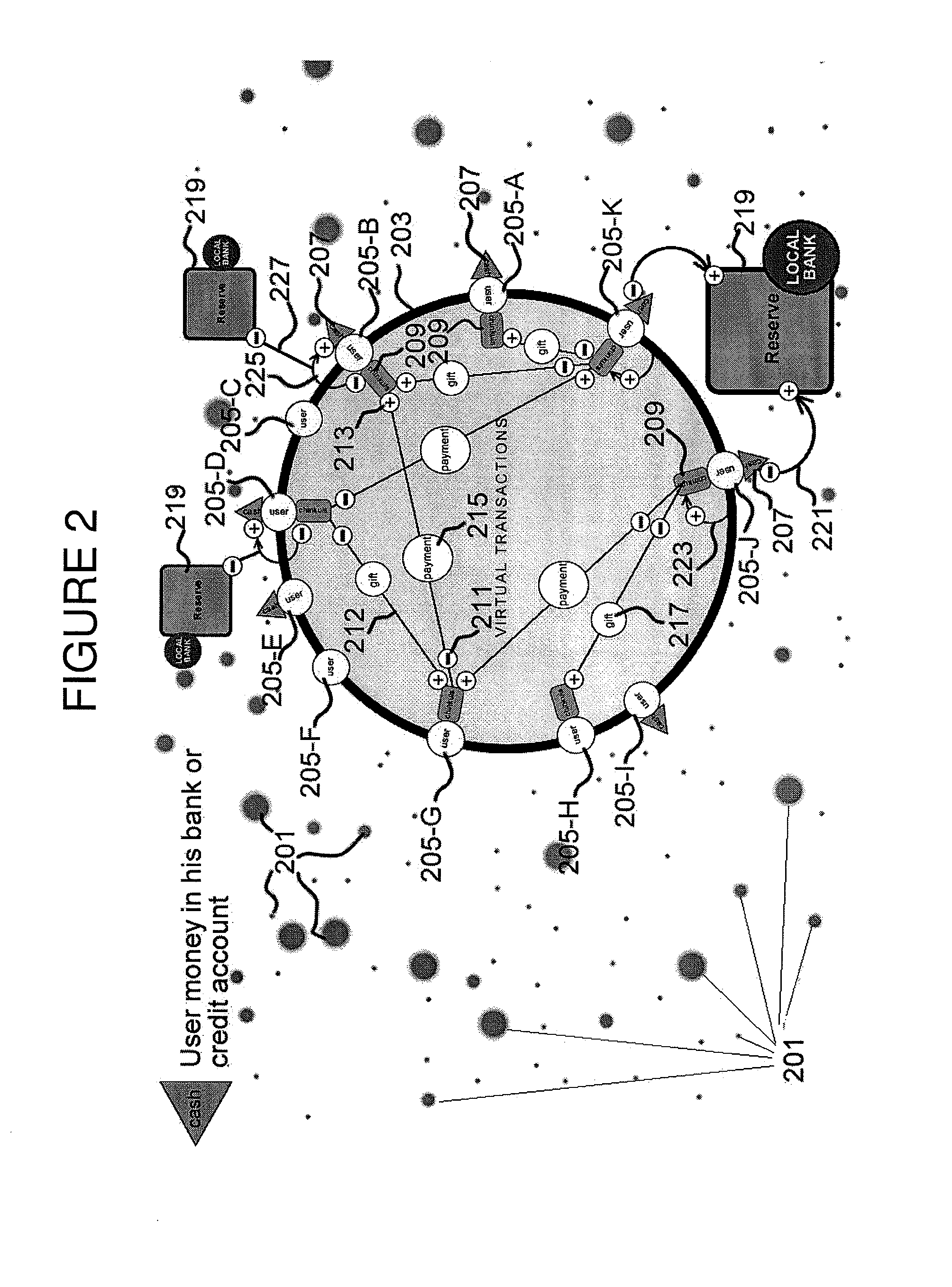Method of virtual transaction using mobile electronic devices or fixed electronic devices or a combination of both, for global commercial or noncommercial purposes
a mobile electronic device and virtual transaction technology, applied in the field of electronic commerce, can solve the problems of large losses for financial institutions, large losses for the payment industry, and many types of payment instruments, and achieve the effect of preventing the exposure of personal and financial data and high merchant account costs
- Summary
- Abstract
- Description
- Claims
- Application Information
AI Technical Summary
Benefits of technology
Problems solved by technology
Method used
Image
Examples
Embodiment Construction
[0084]The main objective of the Payintele system is to facilitate a secure, convenient and reliable financial instrument that people can use on-the-go to accomplish various financial tasks. The financial tasks include sending money to and receiving money from other users of the Payintele system, making payments to businesses for purchases and services, generating notifications and alerts pertaining to the users' financial activities, real time account activity updating, checking balances, functioning as a mobile wallet, adding and withdrawing funds to and from the wallet, assembling all liquid financial assets, local and international denominations, in one place to manage them more efficiently, prevent exposure of personal and financial data, and provide peace of mind to its users.
[0085]The invention is a computer system comprised of hardware and software infrastructure that acts as a platform to which users can connect using their mobile devices and a client application that is exe...
PUM
 Login to View More
Login to View More Abstract
Description
Claims
Application Information
 Login to View More
Login to View More - R&D
- Intellectual Property
- Life Sciences
- Materials
- Tech Scout
- Unparalleled Data Quality
- Higher Quality Content
- 60% Fewer Hallucinations
Browse by: Latest US Patents, China's latest patents, Technical Efficacy Thesaurus, Application Domain, Technology Topic, Popular Technical Reports.
© 2025 PatSnap. All rights reserved.Legal|Privacy policy|Modern Slavery Act Transparency Statement|Sitemap|About US| Contact US: help@patsnap.com



